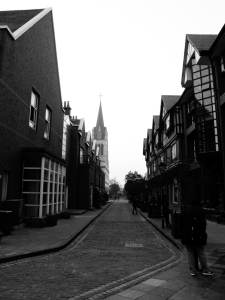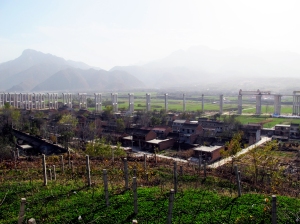My friends and I argue a lot. From the nutritional value of milk, to the mathematical reasoning behind terminal velocity, there is always something to debate. Slowly, over this past semester, it seemed as if everything was becoming an argument. I could no longer go anywhere, see any building, or experience any part of the city without debating its meaning on multiple levels, if not with my fellow classmates than in my own head. It is somewhat reminiscent of that time following the first semester of school, our minds freshly exposed to the beginnings of architectural process and thought. Form, space, program, circulation all took on new meanings, and we haven’t viewed a building the same ever since. It almost feels that way all over again, only this time with respect to urbanism and the city. Nearly every notion I had about the city prior to coming on this journey has now been tested and put through the ringer, time and time again. What I once thought I had figured out has five new points of understanding. We all know by now that there isn’t a definitive right or wrong in this course of study… there is much gray area in between the black and the white. In effect, we can only argue for what we reason as viable solutions to architectural and urban challenges. So now that we are home, how do we continue these arguments that we have been struggling with all semester, and furthermore how do we decide which ones are worth fighting for?
I flew into Washington Dulles International Airport last night, the final stop for me before home. There’s all this hype at the airport over a new underground tram system that was just installed, linking the four terminals together and eliminating the previous and less efficient shuttle system. It was late and stormy out, so my parents told me to get a taxi home. Forty minutes later and sixty dollars poorer I arrived at my front door. The entire ride home, I couldn’t stop telling myself how ridiculous this was. One of the largest international hubs on the eastern seaboard, serviced only by roads! No metro, no trains, no other infrastructure. I wanted to argue… take the money and the time you spent on that tram system and put it towards a subway line into the city center, and eventually one out to the suburbs. Save thousands from pricey and unsustainable commutes, and expedite public transit between major urban nodes. This is worth arguing for. The high-speed rail link between Los Angeles and San Francisco is worth arguing for. Projects such as these now seem infinitely more significant than figuring out the structural layout or the façade system of my next project.
Ultimately, we have to stay curious and continue to question the relevance of our work and our studies within the context of a more macro scale. This semester provided us with a rare opportunity to witness the process and the results of such urban awareness, which remains at the forefront of the Eastern metropolises’ agendas. It won’t be easy to leverage all that we have learned back home, seeing as the western mindset has a different take on many of the issues we explored. But if we continue to make our own arguments, and continue to find cause in the urban, than the purpose of this semester, in my opinion, will have been fulfilled. There is no way we can possibly synthesize all that was presented to us, but we are now equipped with four, five and six new lenses through which to view our environments, lenses that many of our peers won’t have yet. It would be a shame not to put them to use. In the words of our professor, we can only be led to water. It is up to us to remain thirsty.
– Alex
Filed under: About, America, Architecture, Uncategorized, Urbanism









